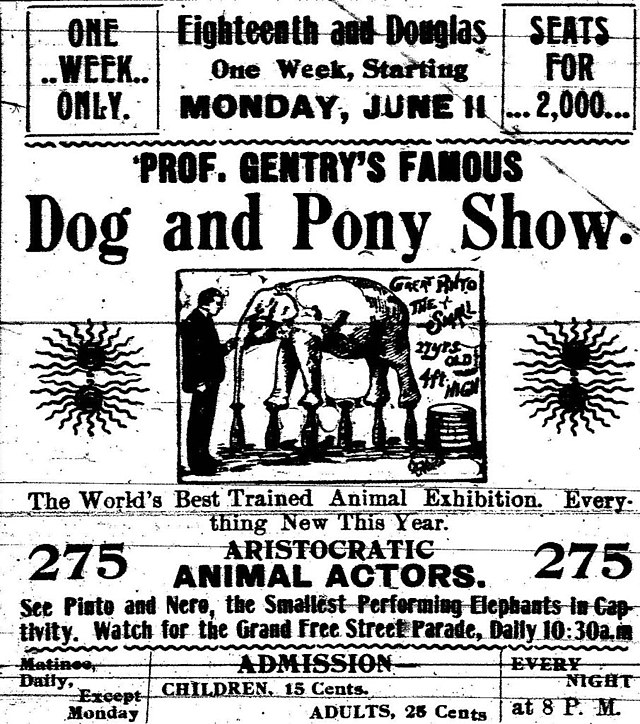Have you ever heard the expression “dog and pony show” and wondered what it actually means? In this blog, we will delve into the intriguing world of this idiom and uncover its origins and significance. The term “dog and pony show” typically refers to an elaborate performance, presentation, or event that is flashy but lacking in substance. It involves a spectacle designed to impress or distract rather than to inform or enlighten.
This blog aims to explore the history behind the phrase, its evolution in modern usage, and examples of when you might encounter a “dog and pony show” in various contexts. Join us on this journey as we demystify the concept and uncover the true meaning behind the intriguing term.
Introduction: Exploring the Concept of Dog and Pony Show
When we delve into the world of presentation and performance, the term “dog and pony show” emerges as a captivating concept. This expression, often associated with elaborate displays or performances to impress or divert attention, holds a deeper significance in various fields. Understanding what is dog and pony show leads us to unravel the art of presentation, persuasion, and entertainment in different scenarios.
The Origin and Evolution
The roots of the dog and pony show idiom can be traced back to the 19th century, where literal displays of trained canines and equines entertained audiences. Over time, the meaning has transitioned to symbolize elaborate presentations or performances that may lack substance.
As communication styles and audience expectations evolve, the concept of a dog and pony show also adapts to fit modern contexts, providing insights into the dynamics of persuasion and entertainment in today’s world.
Application in Business and Politics
In the realm of business and politics, the notion of a dog and pony show resonates strongly. Companies may resort to flashy presentations or marketing gimmicks to attract investors or customers, sometimes overshadowing the actual value of their offerings.
Similarly, politicians often engage in elaborate speeches or staged events to sway public opinion, highlighting the strategic use of rhetoric and theatrics in shaping perceptions.

Origin and History of Dog and Pony Show
A Dog and Pony Show is a term commonly used to describe a presentation or spectacle that is flashy and entertaining but lacks real substance or value. The origins of this term can be traced back to the 1800s when traveling circuses and carnivals were popular forms of entertainment in the United States.
Role of Dogs in Shows
Dogs have been a part of entertainment shows for centuries, showcasing their agility, obedience, and intelligence. In a Dog and Pony Show, these furry companions often perform tricks and stunts to delight the audience.
Pony Performances
Ponies, known for their small size and playful nature, also played a significant role in early entertainment shows. These creatures were trained to perform tricks, races, and even interact with other animals, adding a touch of whimsy to the performances.
Characteristics and Elements of a Dog and Pony Show
A Dog and Pony Show is a term often used to describe an elaborate presentation or performance that is designed to impress or distract, rather than inform or address real issues. The characteristics of a Dog and Pony Show typically include flashy presentations, exaggerated claims, and a focus on entertainment over substance.
Excessive Showmanship
In a Dog and Pony Show, there is an emphasis on theatrics and spectacle, often involving extravagant displays, props, and effects to create a sense of grandeur and importance.
These performances may be more about style than substance, with the goal of dazzling the audience rather than providing meaningful content.
Misdirection and Distraction
Another key element of a Dog and Pony Show is the use of misdirection and distraction to divert attention away from the real issues at hand.
By focusing on flashy presentations and superficial details, presenters hope to keep the audience from questioning or scrutinizing the actual content of the presentation.
Examples of Dog and Pony Show in Different Contexts
When exploring what is dog and pony show, it’s crucial to understand its varied applications in different contexts. Here are some real-world examples:
Corporate Environment
In the corporate world, a dog and pony show may refer to an elaborate presentation or event aimed at impressing stakeholders or investors without substantial substance or value.
Political Arena
Politicians often engage in dog and pony shows during election campaigns, where they prioritize optics and theatrics over addressing key issues.
Entertainment Industry
In the entertainment industry, award shows sometimes transform into dog and pony shows, focusing more on glitz and glamour than recognizing genuine talent.
Impact and Perception of Dog and Pony Show in Society
Understanding the impact and perception of a “Dog and Pony Show” in society can shed light on the way certain events or presentations are viewed. This term refers to a presentation or performance that is elaborate, often overly so, but lacks substantial content or value.
Perception in Business
In the business world, a dog and pony show can be perceived as a flashy display meant to distract from underlying issues or lack of substance. It can create a false sense of importance or success, leading to potential misjudgments by stakeholders.
Effect on Public Image
When public figures or organizations engage in a dog and pony show, it can erode trust and credibility as the audience may see through the facade. In the age of transparency and authenticity, such displays can backfire.
Moreover, social media makes it easier for the public to share their views and opinions, amplifying the impact of these shows in real-time.
Unveiling the Truth Behind Dog and Pony Show
When asking “What is dog and pony show?” in the context of business, it refers to a flashy, often superficial presentation or event with the intention to impress or distract rather than provide genuine value. In the corporate world, this term is commonly used to describe situations where elaborate displays are put on to showcase a product, service, or idea, but lack substantial content or authenticity.
The Origins of Dog and Pony Show
Originating in the 19th century, the term “dog and pony show” originally referred to small traveling circuses that featured dogs and ponies performing tricks to attract audiences. The term later evolved to describe any performance or presentation that prioritizes spectacle over substance.
Modern-Day Utilization
In today’s competitive business landscape, organizations may resort to dog and pony shows to create a facade of innovation or success without delivering on promises. Such displays, although visually appealing, can often mask underlying issues or lack of genuine progress.
Frequently Asked Questions
- What is a Dog and Pony Show?
- A Dog and Pony Show is a term used to describe a presentation or event that is elaborately staged to create a particular impression or effect.
- Where did the term ‘Dog and Pony Show’ originate from?
- The term ‘Dog and Pony Show’ is believed to have originated from the 19th-century circus performances that often featured trained dogs and ponies in an elaborate show.
- Is a Dog and Pony Show always related to animals?
- No, in contemporary usage, a Dog and Pony Show refers to any presentation or event that is meant to impress or distract rather than provide substantial content.
- How is a Dog and Pony Show different from a regular presentation?
- A Dog and Pony Show typically involves a high level of showmanship, theatrics, or elaborate staging to capture attention, whereas a regular presentation focuses more on the actual content or information being shared.
- Can a Dog and Pony Show be deceiving?
- Yes, because of its emphasis on style over substance, a Dog and Pony Show has the potential to be deceiving by presenting a facade of importance or quality that may not align with the actual facts or value.
Unveiling the Truth Behind Dog and Pony Show
After delving into the intriguing world of what is dog and pony show, we have come to understand that this term represents a deceptive or insincere presentation meant to impress or distract rather than inform. Through our exploration, it has become apparent that this tactic is commonly employed in various fields, from politics to business, to captivate audiences and steer attention away from substantive issues.
By decoding the essence of a dog and pony show, we can now recognize when we are being subjected to such superficial displays and maintain a critical perspective. Remember, behind the glitz and glamour lies a lack of substance. Stay vigilant and always seek authenticity over spectacle.



